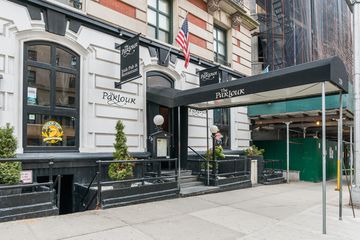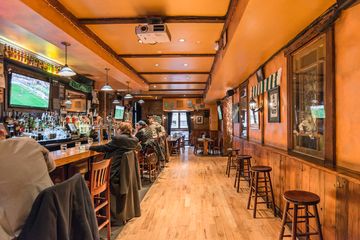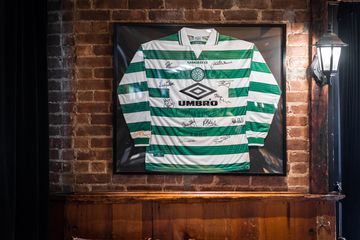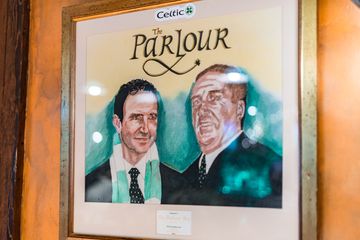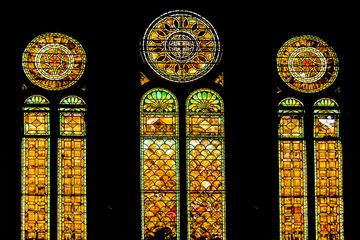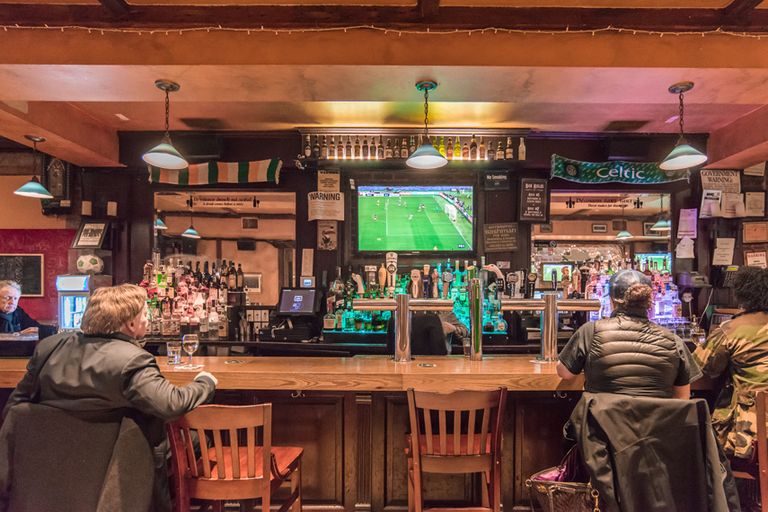
John Kelly, who hails from Dublin, opened the Parlour with two partners in 1997. By 2005, he had become the sole owner of the Irish pub. He had come to New York in 1988 for a three week vacation but did not return to Ireland for three and a half years. He crossed his fingers each day that he would win the green card lottery. Today, he is a naturalized citizen with an American family.
Both on its website and on the back of their menus, the Parlour offers an explanation of its name. It references a Brehon Law that demanded that every town in Ireland have a "parlour" where travelers could receive hospitality. Legend says that the law dates back to when Grace O'Malley, the great pirate queen of the Renaissance, kidnapped the heir of Howth Castle when the lord within refused her a seat at his dinner table. She only returned the heir after the Castle agreed to always have an empty place setting at the dinner table in case someone stopped by. John Kelly, the current owner of the Parlour, told me that the tale often entertains visitors waiting for their food. John admits that he is somewhat of a history buff, at least when it comes to Ireland. After all, Irish history is in his blood.
When the Parlour first opened, it was meant to be "a peek of Ireland for the U.S." John felt that not many people knew about Ireland on the Upper West Side and he wanted to introduce them to Irish culture. He said that people still thought of Ireland as an underdeveloped country where the populace rode around on "donkeys and carts," so he wanted to show them the truth. The location was an interesting choice for a couple of reasons. First of all, during the five years before the three men bought the lease, the space had been rented by four or five different owners that each went out of business. The New York Times included the location in a story about spaces where businesses simply could not succeed. The Parlour proved them wrong. Secondly, the Upper West side was, and is, a predominantly Jewish neighborhood. Whereas some might see that as a hindrance to a bar associated with the Catholic influenced Irish culture, the Parlour quickly drew regulars from the surrounding area. "We slapped a big Irish bar right in the middle of a Jewish neighborhood and they welcomed us with open arms," John said, adding that the heavily Jewish crowds that he receives each night are excellent neighbors and a pleasure to serve.
Boasting three flatscreen TVs, the Parlour is a popular spot for sports lovers. It is also the sponsor for the Columbia women's and men's rugby teams. Other customers simply come in for the friendly vibe or for the drinks. During Happy Hour, John told me, there are $4.00 margaritas - "Not everyone loves a margarita, but everyone loves a $4.00 margarita!" The food menu is also a draw: in 2012, the Parlour's burger was voted the Best Burger of the Year by Time Out Magazine. The hidden gem in the Parlour, however, is its private function room, located downstairs. It can easily hold well over one hundred people and has been used for everything from beer pong tournaments to Irish Music sessions, to a Chrismukkah party. Overall, the Parlour has a little something for each of its neighbors. "It's a special place," John said, proudly.

